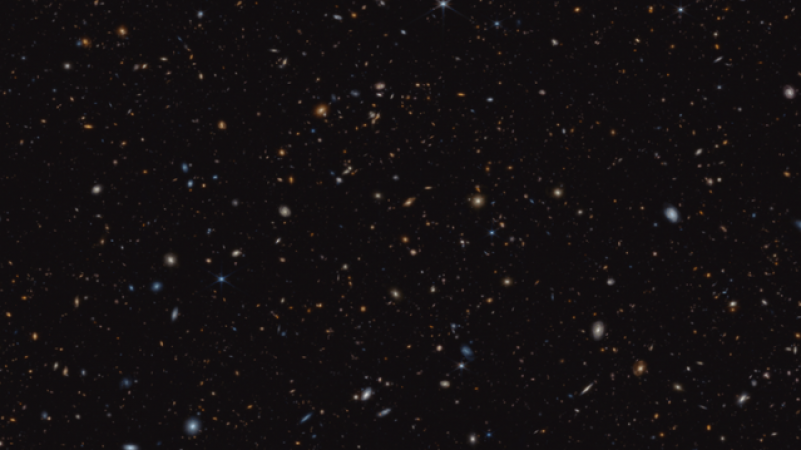
USA: Galaxies from the early universe, which formed only a few million years after the Big Bang, are depicted in a new image from the James Webb Space Telescope. The GOODS-S region of the sky, which is in the general direction of the constellation Fornax, was the focus of the telescope's attention. The most recent Webb image contains more than 45,000 galaxies that are teeming with newborn stars.
According to legend, the Webb telescope is the most potent scientific observatory ever constructed. The telescope, estimated to have cost $10 billion, is nearing the end of its first year of science operations in space.
Unlike any of its predecessors, Webb can see infrared wavelengths of light, enabling it to peer farther into space.
Also Read: NEOM secures $5.6 billion to build the first phase of workforce housing communities
The sparkling galaxies seen in the GOODS-S region date back to the 'Epoch of Reionization', a time in the history of the universe when the first galaxies and stars started to form.
The most recent Webb image depicts galaxies as they were less than 600 million years ago. For comparison, it is thought that the universe is currently about 14 billion years old.
The Webb image also reveals that the galaxies were populated by a "multitude of young, hot stars."
Nearly all of the galaxies that we have discovered exhibit these unusually potent emission line signatures, which indicate active recent star formation. The investigation's principal investigator, Ryan Endsley of the University of Texas at Austin, said that these early galaxies were excellent at producing hot, massive stars.
Also Read: Philippine court rejects staunch Duterte critic's application for bail in drug case
These "hot, massive stars" emitted radiation that helped the universe become ionised. The JADES, or JWST Advanced Deep Extragalactic Survey, programme includes the investigation. This programme includes "uncovering and characterising faint, distant galaxies" as one of its goals. Hundreds of galaxies that were present when the universe was younger than 600 million years old have already been found by JADES.
The phenomenon known as redshift causes light from distant galaxies to be stretched to longer wavelengths and appear redder. Astronomers can determine the age and distance of the galaxy by measuring redshift.
Also Read: Pope Francis will have intestinal surgery and spend several days in the hospital
According to NASA, JADES has discovered nearly a thousand of these extremely distant galaxies. "Before Webb, there were only a few dozen galaxies observed above a redshift of 8," said NASA.